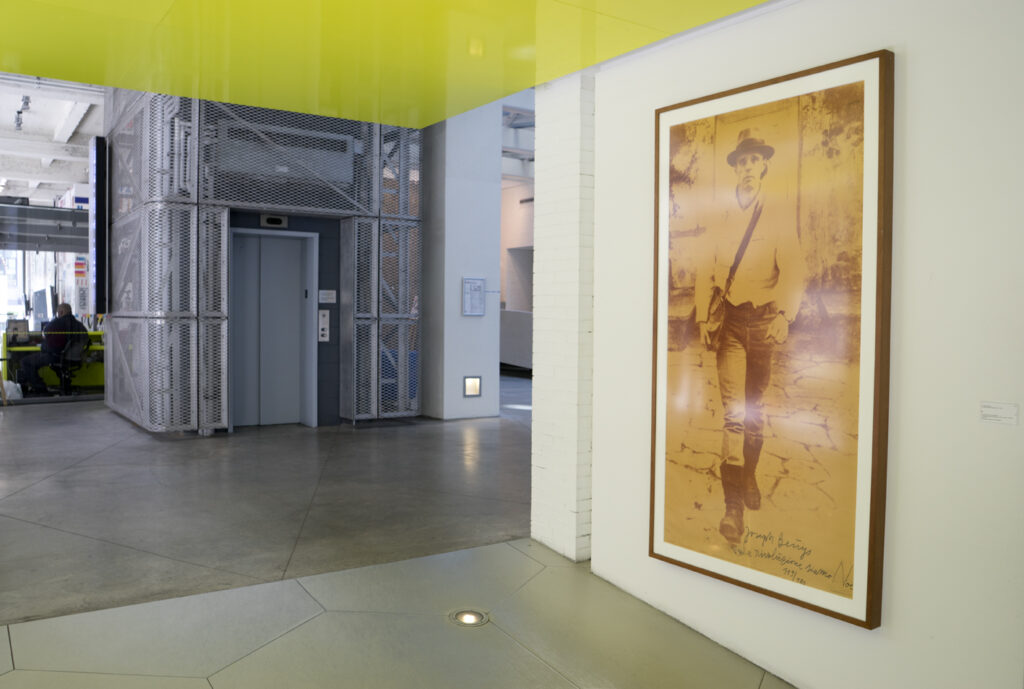
Positioned in the tight space between the old Parsons building and the new wing of the gallery, this almost life size print of Joseph Beuys—La Rivoluzione Siamo Noi—strutting forth with purpose, pushes one to consider doing the same. This specific location of the print, facing the street through the clear glass, also forces one to contemplate individually, the image, the size and meaning either within the walls of the educational institution—or from 13th Street in New York City where the view is free.
The print exposes Joseph Beuys in his glory: he survived near fatal injuries in WW II as a Luftwaffe pilot, where he was found and wrapped in felt and fat to preserve his body temperature, then taken to safety by dogs on a sled. He continued to make all of his life experiences integral to his artwork, writing and teaching. Here he moves with a kind of purpose, passion, and grace making use of all of his deeply personal experiences. Artist and educator, shaman and revolutionary, Beuys said that people must change before society can change. The work encourages, and as almost full-size and mirror-like, forces self reflection, while asking the deepest of personal and philosophical questions concerning self-actualization and the revolution within.
The placement of the print, almost life-size, asks me, as the viewer, to reflect on the artist or citizen and ask ourselves-—is that me? We are asked to question who we are and why we do what we do every day, and numerous times a day, at school. The culture of The New School is one of change, encouraging us to have the courage to move with passion and not care about how this is seen. Are we are in a position to create ourselves, to find our purpose and to seek the revolution within? Do we have the courage to do so?
Here at school, as citizen, student, and professor, I continue to question my strut.
How do I/we walk through the hallways, the streets, this life?
Does the work I/we are doing as educators and mentors create a better life for all of those we encounter?
Do I/we push others to be the best they can be as agents of social and cultural change?
Robert Rabinovitz
Faculty, Parsons The New School for Design

